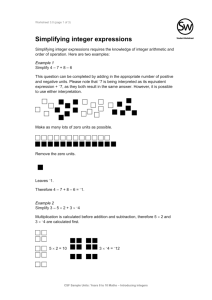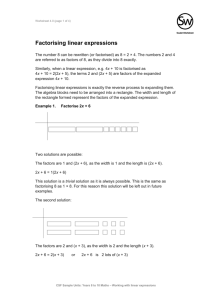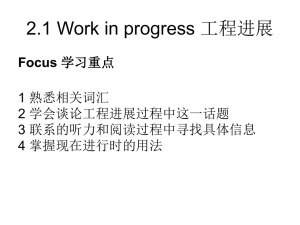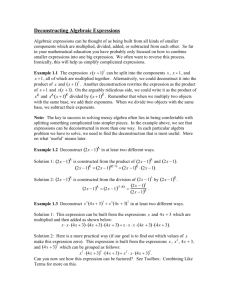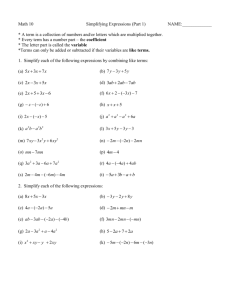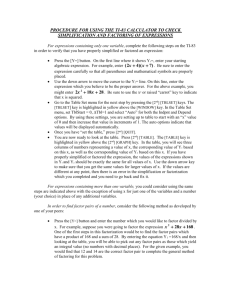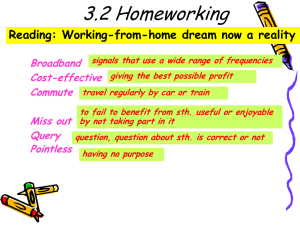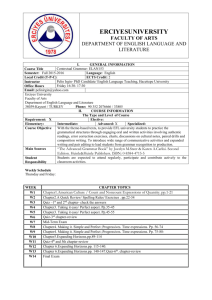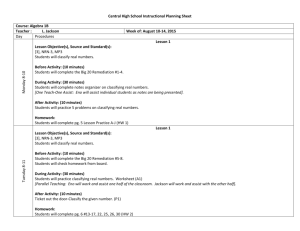Expanding linear expressions
advertisement
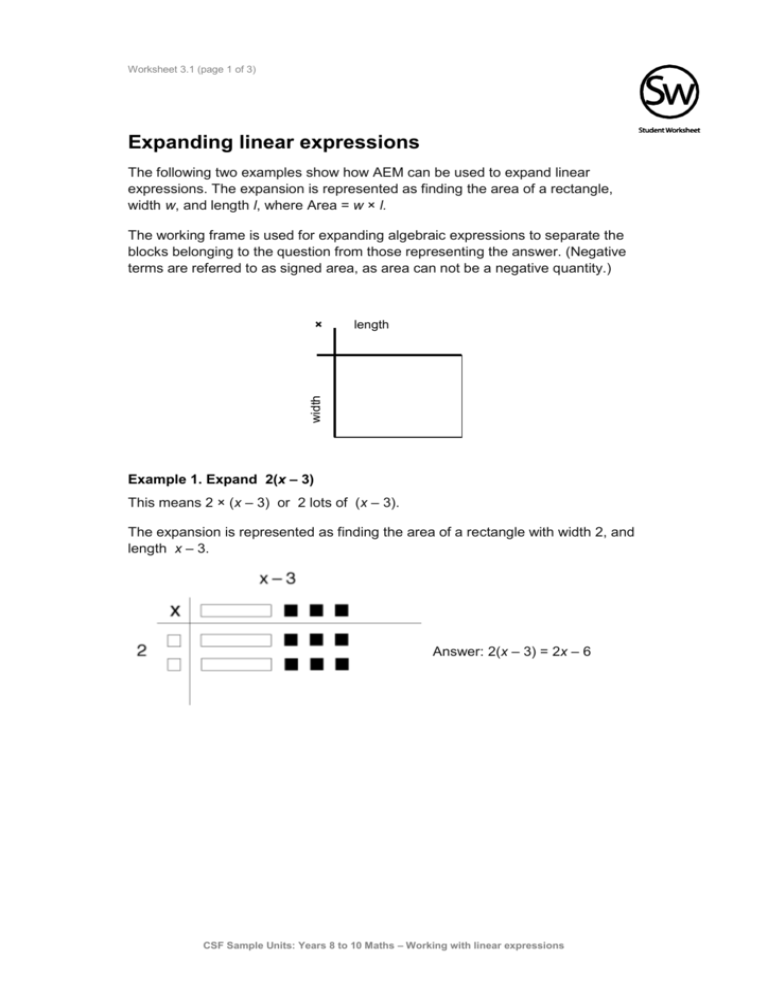
Worksheet 3.1 (page 1 of 3) Expanding linear expressions The following two examples show how AEM can be used to expand linear expressions. The expansion is represented as finding the area of a rectangle, width w, and length l, where Area = w × l. The working frame is used for expanding algebraic expressions to separate the blocks belonging to the question from those representing the answer. (Negative terms are referred to as signed area, as area can not be a negative quantity.) length width × Example 1. Expand 2(x – 3) This means 2 × (x – 3) or 2 lots of (x – 3). The expansion is represented as finding the area of a rectangle with width 2, and length x – 3. Answer: 2(x – 3) = 2x – 6 CSF Sample Units: Years 8 to 10 Maths – Working with linear expressions Worksheet 3.1 (page 2 of 3) Example 2. Expand –2(x – 3) Answer: –2(x – 3) = –2x + 6 1. Use your blocks and working frame to find the expansions of the following expressions. a) 3(x – 2) i) 3(x – 4) b) 4(x – 1) j) 5(x + 2) c) 5(x + 3) k) 5(x – 2) d) 6(x – 1) l) –1(x + 3) e) 2(x + 3) m) –2(x + 3) f) –1(x – 3) n) –3(x + 3) g) –2(x – 2) o) –5(x – 4) h) –4(x – 1) p) –3(x – 5) 2. Write the expanded expression and the answer, for the following diagrams. a) c) ___ ( _______ ) = __________ ___ ( _______ ) = ___________ CSF Sample Units: Years 8 to 10 Maths – Working with linear expressions Worksheet 3.1 (page 3 of 3) b) d) ___ ( _______ ) = ____________ ___ ( _______ ) = _________ Write the expansions of the following expressions. Use your algebra blocks or diagrams to help where necessary. e) 2(2x – 3) f) 3(3x – 1) g) 4(3x – 1) h) 2(5x + 4) i) 3(2x – 2) j) 3(2 – 2x) k) –2(2x – 1) l) –5(2x + 2) m) –3(2x – 3) n) –2(4x – 5) o) –3(1 – x) p) –4(3 – 2x) CSF Sample Units: Years 8 to 10 Maths – Working with linear expressions CSF Sample Units: Years 8 to 10 Maths – Working with linear expressions

